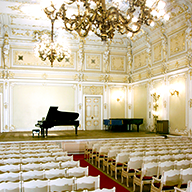Log In
Sign Up
All events
04
july, 2025
10:00, fri
"Recorder in Renaissance and Baroque music: phrasing, strokes and melisms.
Playing solo and consort"
Playing solo and consort"
The Faculty of Historical and Modern Performance at the Tchaikovsky Moscow State Conservatory presents
Alexey Shein - ãîáîé
Cancelled concert
08
july, 2025
11:00, tue
Mikhail Aleinikov - guide; Mikhail Serazitdinov - organ
900 RUB
08
july, 2025
14:00, tue
Mikhail Aleinikov - guide; Mikhail Serazitdinov - organ
900 RUB
09
july, 2025
12:00, wed
Mikhail Aleinikov - guide; Mikhail Serazitdinov - organ
900 RUB
10
july, 2025
12:00, thu
Mikhail Aleinikov - guide; Mikhail Serazitdinov - organ
900 RUB
11
july, 2025
12:00, fri
Mikhail Aleinikov - guide; Mikhail Serazitdinov - organ
900 RUB
14
july, 2025
11:00, mon
Margarita Samoilova - guide; Mikhail Serazitdinov - organ
900 RUB
14
july, 2025
13:00, mon
Margarita Samoilova - guide; Mikhail Serazitdinov - organ
900 RUB
15
july, 2025
11:00, tue
Margarita Samoilova - guide; Mikhail Serazitdinov - organ
900 RUB
15
july, 2025
13:00, tue
Margarita Samoilova - guide; Mikhail Serazitdinov - organ
900 RUB
16
july, 2025
11:00, wed
Margarita Samoilova - guide; Mikhail Serazitdinov - organ
900 RUB
17
july, 2025
11:00, thu
Margarita Samoilova - guide; Mikhail Serazitdinov - organ
900 RUB
18
july, 2025
12:00, fri
Margarita Samoilova - guide; Mikhail Serazitdinov - organ
900 RUB
21
july, 2025
19:00, mon
Moscow Jazz Orchestra
Igor Butman - saxophone; Victor Dobronravov - actor
Jazz performance "Peter and the Wolf"
Organizers:
Jazz Musicians Association
1000 — 10000 RUB
22
july, 2025
11:00, tue
Margarita Samoilova - guide; Mikhail Serazitdinov - organ
900 RUB
22
july, 2025
14:00, tue
Margarita Samoilova - guide; Mikhail Serazitdinov - organ
900 RUB
23
july, 2025
12:00, wed
Margarita Samoilova - guide; Mikhail Serazitdinov - organ
900 RUB
24
july, 2025
12:00, thu
Margarita Samoilova - guide; Mikhail Serazitdinov - organ
900 RUB
25
july, 2025
12:00, fri
Margarita Samoilova - guide; Mikhail Serazitdinov - organ
900 RUB
26
july, 2025
11:00, sat
Margarita Samoilova - guide; Mikhail Serazitdinov - organ
900 RUB
Grand Hall:
191186, St. Petersburg, Mikhailovskaya st., 2
+7 (812) 240-01-00, +7 (812) 240-01-80
+7 (812) 240-01-00, +7 (812) 240-01-80
Small Hall:
191011, St. Petersburg, Nevsky av., 30
+7 (812) 240-01-00, +7 (812) 240-01-70
+7 (812) 240-01-00, +7 (812) 240-01-70
Write us:
Opening hours of the Grand Hall box office: 11 am to 8.30 pm
Lunch Break: 3 pm to 4 pm
Lunch Break: 3 pm to 4 pm
Small Hall box office hours: from 11 am to 7 pm (on concerts days to 7.30 pm)
Lunch Break: 3 pm to 4 pm
Lunch Break: 3 pm to 4 pm
© 2000—2025
«Saint-Petersburg Philharmonia»
«Saint-Petersburg Philharmonia»



















